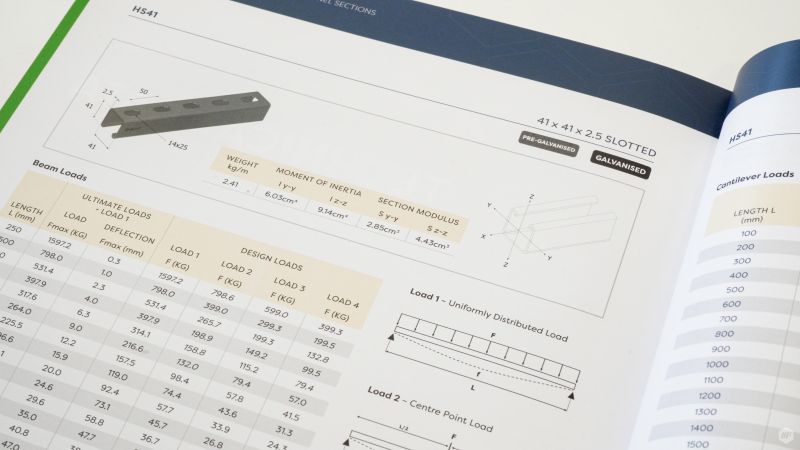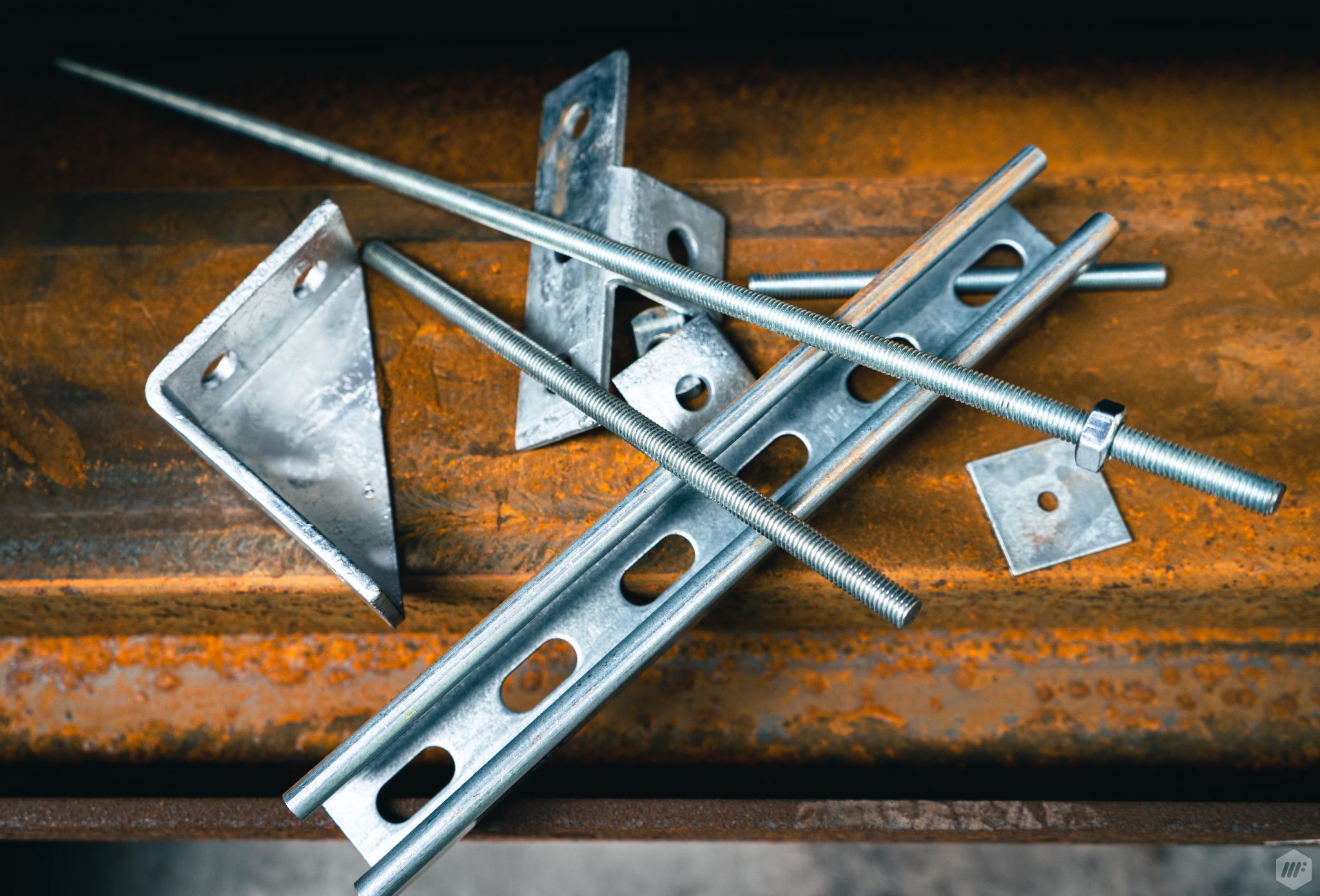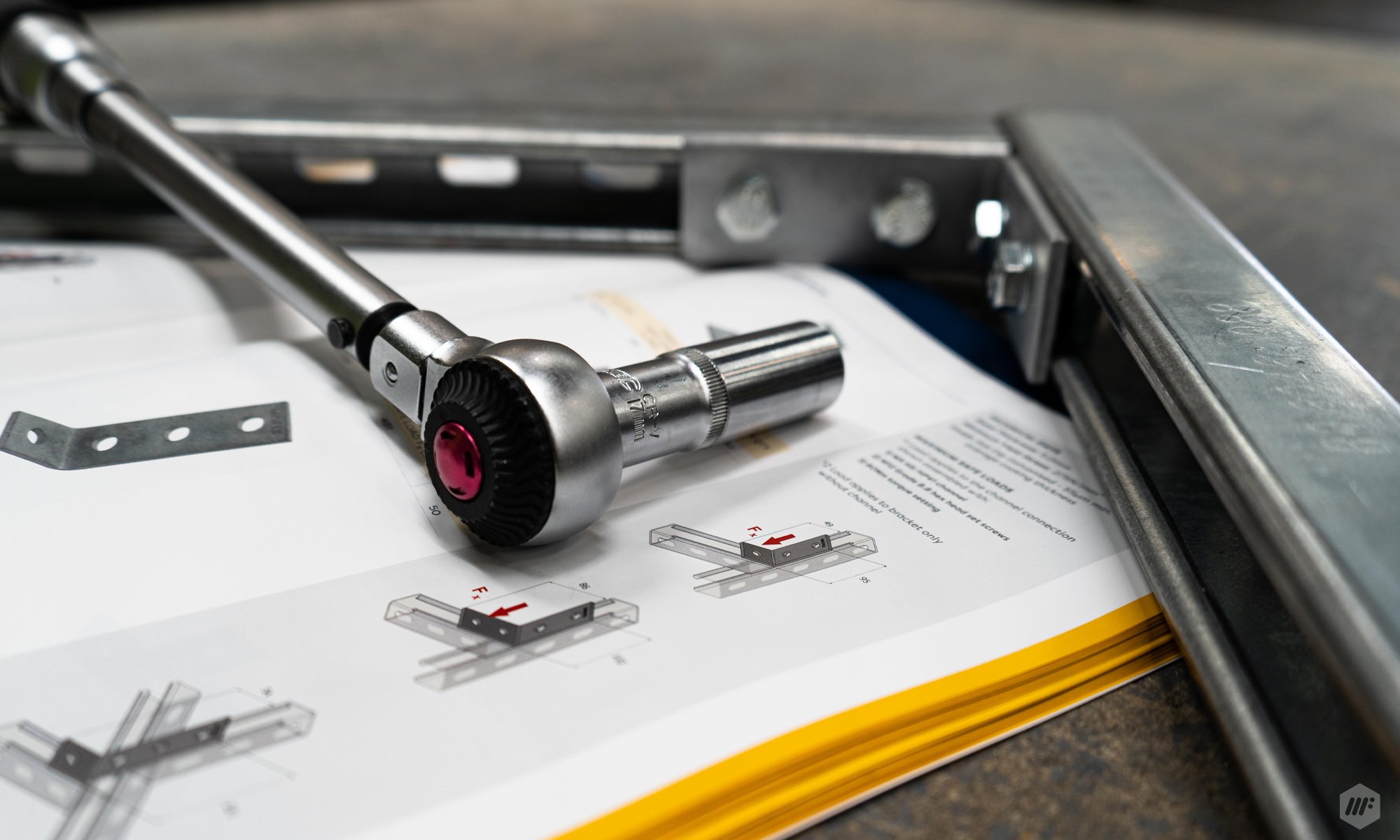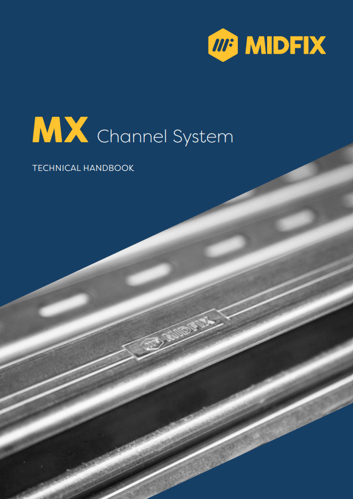If you’ve read our recent blogs or posts, you may have noticed us talking about tested channel systems quite a lot for a while now.
Well, the time has finally come for us to nail our colours to the mast by introducing our take on them: the MX Channel System. Let us introduce you!

Intrigued? Keep reading or navigate the article by clicking through:
- What is the MX Channel System?
- Why did we develop the MX Channel System?
- Why does the industry need it?
- Can't I just stick with standard channel and fittings?
- What changes would I need to make in my working practices?
- Is there training available for my installers?
- MIDFIX MX Channel System Feedback
- Conclusion

What is the MX Channel System?
MIDFIX MX is a tested channel system for engineered supports. It is designed to answer the needs of the M&E sector for a quality-assured support system for building services installations, for contractors committed to following industry best practices.
Why did we develop the MX Channel System?
Following the 2017 Grenfell tower fire, we came to the realisation that something had to change in our industry. As specialists in M&E, we know that channel is one of the most commonly used components. So, we decided to start from the bottom up and see what can be done to optimise channel.
.png?width=5551&name=MicrosoftTeams-image%20(462).png)
Around the same time, the 2018 report by Dame Judith Hackitt titled “Building a Safer Future: Independent Review of Building Regulations and Fire Safety” came out with recommendations. Yes, this was more specific to high-rise buildings, but it was very clear from the beginning that this would trickle down to all parts of construction, as its principles regarding safety were applicable to everything.
Lo and behold, it did! The Building Safety Act 2022 states that many aspects of the report, including the golden thread, will become legislative starting next year.
So, all of those things came together and it became something that we didn’t just want to do for our own benefit or for ‘performative activism’. Rather, something terrible happened that affected many, and we felt it was our duty and obligation as MIDFIX to try and do what we can to help the industry step ahead and be the best we can be – that’s what motivated us. Long story short, MX was born!
Why does the industry need systems like MX?
Supports are a key element in every building services installation and are crucial to the integrity of the systems they support and the safety of the building occupants.
Typically, building services supports will combine channel and bracketry of unproven performance from various sources into a single installation. As more attention is given to reducing risk and raising standards within the industry, it is becoming increasingly common that contractors are required to provide design verification for the loads of the supports.
That means the engineer needs to have dependable information and load data for the components and connections, and evidence that the products specified by the engineer are the same ones used on site.

Another important consideration is that it is usual in the industry for supports to be considered in isolation from the anchors they are installed with. The MX Channel System integrates with the MIDFIX Anchor Programme into a single source solution. Contractors using the MX system can demonstrate that the supports they’ve installed will safely take the service load applied and that both the supports and fixings are fit for purpose.
The MX Channel System is the answer to this. It provides both the specifier and the contractor with a tested channel system of products identifiable by the MIDFIX stamp for on-site verification of system integrity.
Can’t I just stick with standard channel and fittings?
Erm, you probably shouldn’t.
Put simply, the current approach means there is a lack of tested products as an evidence-based system, and transparent product information and identification.
If you think about your previous installations, how many have failed? Hopefully, not many, right? But now ask yourself this: do you have sufficient tangible evidence to prove that your installations are fit-for-purpose? I’m guessing that’s a no too.
So, does that answer the above question? It’s not about stopping your installations from failure; it’s about proving that you’ve done that. Lack of failure does not equal evidence.
“What about the manufacturer’s data? Is that not evidence?” Very good point! It’s true, each manufacturer gives the load data performance for individual products… Emphasis on individual! Once again, the MX system is a comprehensive system of products tested together, not just separately, and that’s what makes it so effective.
Mixing and matching components is another example of poor practice in our industry. Combining two products from different sources will nullify the data of both of those products individually because they haven’t been used together. Who’s to say the two of them can actually perform well?

Without the data to prove that the components have been tested together, there’s no way to know for sure whether or not the system can handle the load and would be fully functioning. Most installs are based on judgment rather than science. This of course results in much higher risks of not just failure, but injury or even death
Another point is, that other manufacturers’ channel products nearly always use calculated data based on material performance, and that means that it is a desktop calculation as opposed to a physical application-based laboratory test.
What changes would I need to make in my working practices?
Self-evidently, you would stop mixing and matching components from different sources, and you would also stop over-engineering (specify oversized components in bracket assembly in an attempt to stop failure). That’s because, with the MX system, you have a solution that is fine-tuned and ideal (not too much, not too little) and backed up with enough evidence that you don’t have to go overboard to ensure it won’t fail.
As mentioned, the golden thread will soon become legislative, and it’s likely that other recommendations from the Hackitt report will as well. That means whoever is responsible for buildings will have to have the relevant ‘information that allows you to understand a building and the steps needed to keep both the building and people safe, now and in the future’.
Of course, the main distinguishing feature of the MX system is that all components are tested together. What that means is that from now on, you need to have all the technical load data and the guides. For example, with a trapeze bracket, you would need the data behind all the tested components together, including the anchor, the drop rod, the connection between it, and the channel, plus the load data for the load-bearer (channel).
The point of the MX system is to optimise your designs. In order to do that, you have to:
- Engage early in the project.
- Specify the tested channel system
- Train the installers.
- Document your installation.
You’ll thank yourself later for saving yourself the physical harm, financial loss, and reputational loss that might’ve been caused. You’ll be helping the industry move forward, achieving safe and competent installations, and in turns, becoming more attractive to your clients. What more could you want?
Lastly, a practice that happens all too often in our industry is that site teams are tasked with designing solutions solely based on their experience, and not basic design considerations or calculations. This will also change.
With MX, you would be verifying the design load of the supports and making sure that the same parts used in the design are used in the final product. At the same time, the engineering drawings and reports will mean you can document the entire process, demonstrating that the brackets are fit for purpose.
Is there training available for my installers?
Training is highly emphasized in the reports because you need to be competent enough for the installation – regardless of the bracket or system. So, you can expect user training to become more and more normalised.
MX, and any tested channel system, require adherence to building parameters; meaning, regardless of your experience, you’ll need training for an installation.
It is backed up by a warranty; essentially, a document that certifies that the products used are correct and part of a system, installed as per the specification, and the installer has been competently trained. The exclusion of any one of these requirements makes the warranty null and void.
The good news is that training is readily available and accessible. A training program could either be face-to-face in a classroom/workshop environment or online/digital. As long as you leave with certification that confirms competence training, you’re all set.
For instance, you need to be trained to use a calibrated torque wrench to tighten the nuts to connect the channel with other components (channel accessories, e.g. channel plates, anchors, etc.) as the method can make or break the entire support.

If you’re both using a system like MX and you have proof that your installers are trained, then you automatically have proof that your installation is fit for purpose, and if anyone asks you, you’re prepared. Done and dusted, mission accomplished!
MX Channel System Feedback
"Having worked in the M&E Industry 15 Years, the MX Channel System and the test evidence & training that goes with it is a breath of fresh air.
For too long we have over engineered our bracket systems with safety in mind, but without any evidence to provide that the brackets will take the service load.
Using the MX Channel system has allowed us to effectively design our channel brackets with peace of mind and evidence to support our design.
We can now offer our clients a comprehensive technical submission and design for our standard channel type arrangements on our projects.
With the added benefit of the product range remaining the same, and the system evidence and design guide being provided at no extra cost."
Lewis Hudson - H.E. Barnes - Project Manager
"Yes, the MX Channel System will save us time, cost and bracketry because it is a good way to evidence what we have done and I believe that the tested channel system will save us bracketry.
The lads have been sticking bracketry at 1200 spacing but with a tested system, your designers will come with distances further than that. And the products are at cost point.
Spent a bit of time looking at suppliers and chose MIDFIX.
I can't see why MIDFIX won't get an awful lot more business from us. I looked at Hilti and Fischer, they both provide a similar system, but you know the cost of Hilti. Hilti also throw theirs in a fire.
I can use the MX table and buildings regs to calculate the size of the rod.
The MIDFIX MX channel system is a perfect solution for the road that we are taking to make sure bracketry is tested".
M&E Contractor - Principal Contracts Manager
Conclusion
The introduction of the MX system is one small step, one of the first contributions, towards a safer future in construction. The goal is that it will hopefully make higher safety standards, design verification, compliance, and evidence, much easier to attain than it is with the current traditionalist methods.
With the MX system, by default, you will have evidence and data behind all of the products, giving you peace of mind that you’ve done your due diligence and should any issues arise, no one can blame you!


